Experiments from the Mini Professors
Before you start, make sure you have adult supervision.
Non-Newtonian fluid experiment
Video experiment description
In this video Professor Jess is going to be demonstrating how none-Newtonian fluid states can be created and how they can respond to different environments. For this experiment you will need a pint glass full of corn flower, a pint glass full of water, a mixing bowl, spoon to mix with, some plastic sheeting or clingfilm, Sellotape and a speaker.
After adding the cornflower to the bowl, start to add the water slowly and mix. You will be able to feel whilst mixing how the cornflower and water mixture starts to change states! Once you have mixed it all together and observed the changes, add it to the clingfilm which is taped over a speaker. Make sure you ask a grown up first! Once the music is turned on you will be able to feel the mixture dance.
Static electricity experiment
Video experiment description
In this video Professor Jess is going to be using some household items to do some demonstrations of how static electricity works.
In this video you will need a balloon, a bottle, a pen, tissue paper and scissors. For experiment one, rub the balloon on your head and see what happens to your hair. For experiment two, draw three frogs onto the tissue paper and then cut them out. Then once again, rub the balloon on your head to give it a negative charge… see what happens to the frogs when you place the balloon near them. Experiment three, get your bottle and place the pencil on top of the lid. Give the balloon some extra negative charge by rubbing it on your head and then place the balloon by the pencil and see what happens!
Ice on colours experiment
Video experiment description
In this video Professor Jess is going to be looking at the different speeds ice melts depending on the colour of card it is sat on.
You will need to be outdoors in the sunshine, have a bag of ice and a variety of different coloured card to work with. Lay the card out in the sun and add an ice cube to each of the different colours of card. Leave it a few minutes and see how the ice responded! Were they all the same or did different colours create different results?
Bug hunt
Video experiment description
Professor Jamie will be presenting this video, it is an investigation and observation task to see what different types of bugs you can find!
You will need a magnifying glass, a see-through plastic box and a check list so you can identify the different types of bugs you have found.
We’d love to see the different ways you find to record your list to make it accessible to you.
Paddle boat experiment
Video experiment description
Professor Jess will be showing you how to make your own paddleboat using things from in the home, once you have made your paddleboat you will be able to start your experiments.
You will need tape, rectangle stencil, a bottle, a milk carton, elastic band and a set of chopsticks to make your paddleboat. Using the rectangle stencil draw on the milk carton four times using your pen. Get a grown up to help you cut out the rectangular shapes. Tape the chopsticks to each side of the bottle whilst the rectangle shapes are being cut out of the milk carton. Once you have four rectangle shapes, bend them each in half. Then using lots of tape, stick them together to create a propeller. Push the elastic band over the chopsticks and then slot one of the propeller sides into the elastic band. Your boat is created! You may decorate it if you wish. To get the propeller to power the boat you will need to twist it round very tightly and set it off in water.
Moving colours experiment
Video experiment description
In this video Professor Jess is going to demonstrate how by using water, food colouring and paper towels she can transfer colours from one cup to another. This experiment is visual and may not be suitable for everyone.
You will need 5 plastic cups, a jug of water, paper towels and 3 different food colouring types. Line up the 5 cups and fill the 1st, 3rd and 5th cup with the water from the jug. Add a different food colouring to each of the cups that contain the water. Then take your paper towel and fold it twice long ways and once width ways. Put one end of the paper towel into one of the cups that contains the water and food colouring and have the other end of the paper towel in one of the empty cups. Repeat this step so that all the cups are linked by paper towels. Return in a few hours to see what has happened.
Waterproof bag experiment
Video experiment description
In this video Professor Jamie is going to be making a magical waterproof bag.
For this video you will need a plastic re-sealable bag, some pencils, a jug of water and some helpers.
Fill the bag up with water and start to push the pencils right the way through the water filled bag… see what happens!
Skittle rainbow experiment
Video experiment description
In this video Professor Jamie is going to be making a skittle rainbow. This experiment has visual results so may not be suitable for everyone.
You will need a bag of skittles, a plate and some warm water for this experiment. Arrange the skittles around the outside of the plate and then pour the warm water into the centre… then see what happens!
Accessibility
In a bid to include as many ideas as possible, we understand some content and challenges may need parent or adult support to read and set-up. Please let us know about any particular difficulties you found and how these might be improved for future use. Get in touch at sciencefair@victa.org.uk








